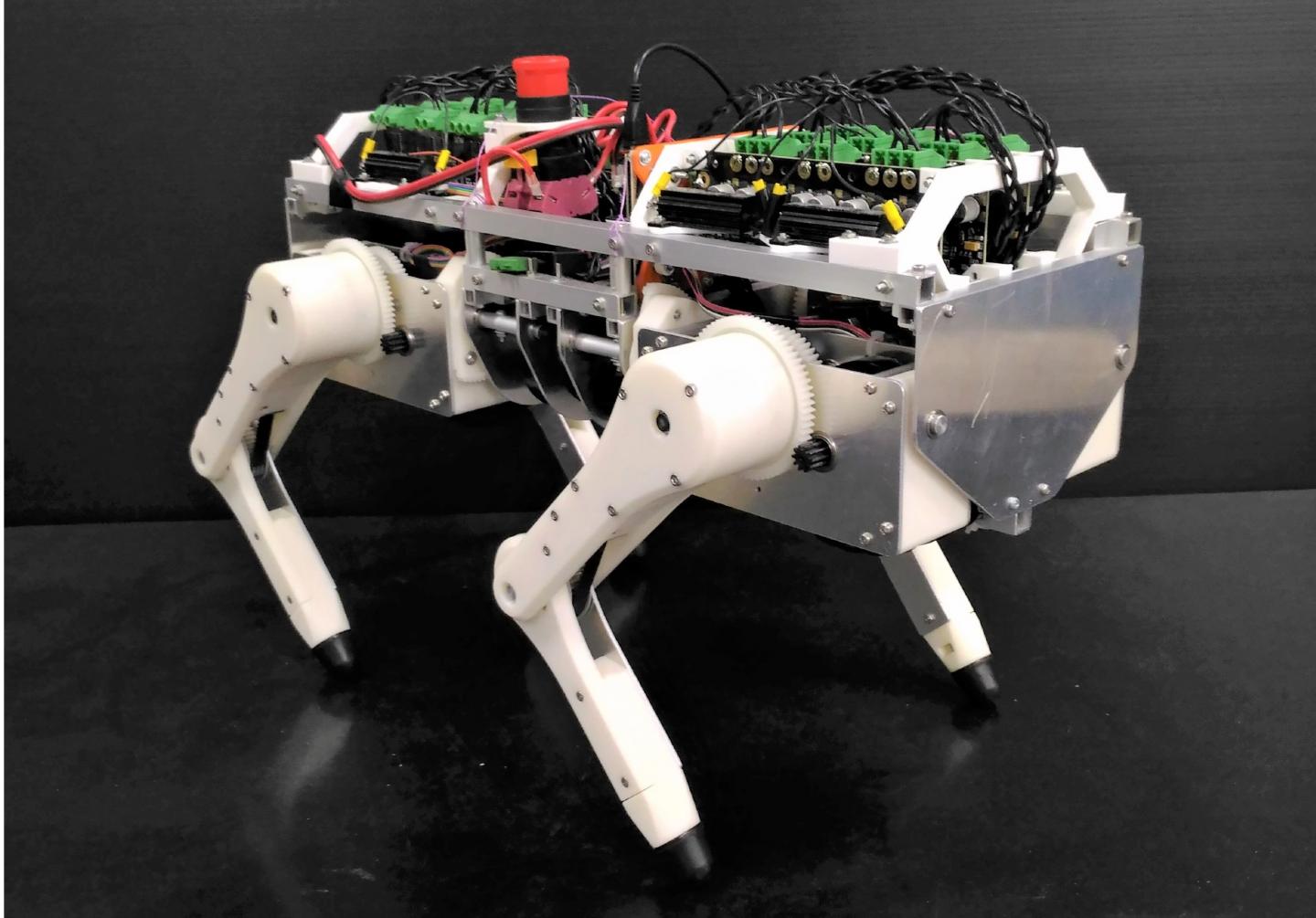It was thought that a steady gait in animals is generated by complex nerve systems in the brain and spinal marrow; however, recent research shows that a steady gait is produced by the reflex circuit alone. Scientists discovered a candidate of reflex circuit to generate the steady walking motion of cats, investigating locomotion mechanisms of cats by reproducing their motor control using robots and computer simulations.
Since experiments using animals are strictly controlled and restricted in terms of animal protection, it is difficult to study animal locomotion. So, it is still unknown how nerve systems discovered in prior research are integrated (i.e., how reflex circuits responsible for animal locomotion are integrated) in the animal body.
Toyoaki Tanikawa and his supervisors assistant professor Yoichi Masuda and Prof Masato Ishikawa developed a four-legged robot that enables the reproduction of motor control of animals using computers. This quadruped robot, which comprises highly back-drivable legs to reproduce the flexibility of animals and torque-controllable motors, can reproduce muscle characteristics of animals. Thus, it is possible to conduct various experiments using this robot instead of the animals themselves.
By searching for the reflex circuit that contributes to the generation of a steady walking in cats through robotic experiments, the researchers found a simple reflex circuit that could produce leg trajectories and a steady gait pattern, which they named “reciprocal excitatory reflex between hip and knee extensors.”
In this study, the researchers found that:
- – The robot generated steady walking motions by simply reproducing the reciprocal circuit in each leg of the robot.
– The robot’s gait became unstable when the reciprocal circuit was cut off.
– When the mutual excitatory circuit was stimulated, the circuit produced a phenomenon called ‘prolongation of the stance phase.’ This result suggests that this circuit is an important component responsible for walking in cats.
This group’s research results will benefit both the biology and robotics fields. In addition to bringing new knowledge to biology, if robotic animals could serve as a replacement for real animals in the future, it will give more scientists the chance to study the mechanisms of animal locomotion under various experimental conditions. Approximating a robot’s structure to that of an animal will lead to the development of fundamental technologies for making robots that move and maneuver as effectively as animals.
Co-author Yoichi Masuda says, “Gaining knowledge about animals without using experimental animals is also significant for the humans that live with them. Further combination of robotics and biology through the creation of robots that mimic the structures of animals and their locomotion could become the first step towards understanding the principles underlying the behaviors of animals and humans.”
###
The article, “A reciprocal excitatory reflex between extensors reproduces the prolongation of stance phase in walking cats: analysis on a robotic platform,” was published in Frontiers in Neurorobotics at DOI: https:/
A video detailing this research can be viewed on https:/
About Osaka University
Osaka University was founded in 1931 as one of the seven imperial universities of Japan and is now one of Japan’s leading comprehensive universities with a broad disciplinary spectrum. This strength is coupled with a singular drive for innovation that extends throughout the scientific process, from fundamental research to the creation of applied technology with positive economic impacts. Its commitment to innovation has been recognized in Japan and around the world, being named Japan’s most innovative university in 2015 (Reuters 2015 Top 100) and one of the most innovative institutions in the world in 2017 (Innovative Universities and the Nature Index Innovation 2017). Now, Osaka University is leveraging its role as a Designated National University Corporation selected by the Ministry of Education, Culture, Sports, Science and Technology to contribute to innovation for human welfare, sustainable development of society, and social transformation.
Website: https:/


